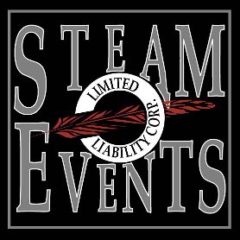The logo for the National Summer Steamup is a parody of the logo of a “fallen flag” — a shuttered railroad. Continuing the history that Dave Cole began, each year a logo is created and used for the Clothing, Brochure, Name tags etc. It is kept secret until the start of the steamup.
NSS 2024:
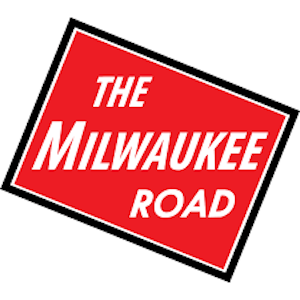
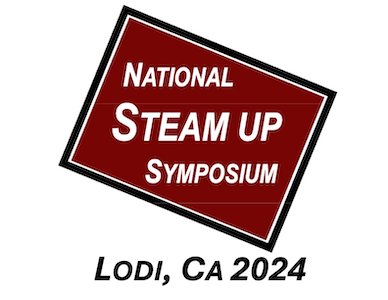
The Chicago, Milwaukee, St. Paul and Pacific Railroad (CMStP&P), better known as the Milwaukee Road, operated in the Midwest and Northwest of the United States from 1847 until 1986. The railroad that became the Milwaukee Road began as the Milwaukee and Waukesha Railroad in Wisconsin, whose goal was to link the developing Lake Michigan port City of Milwaukee with the Mississippi River. Its first line, 5 miles long, opened between Milwaukee and Wauwatosa, on November 20, 1850. Extensions followed to Waukesha in February 1851, Madison, and finally the Mississippi River at Prairie du Chien in 1857.
In 1874, the name was changed to Chicago, Milwaukee, and St. Paul after constructing an extension to Chicago in 1872. In 1890, the company purchased the Milwaukee and Northern Railroad; by now, the railroad had lines running through Wisconsin, Minnesota, Iowa, South Dakota, and the Upper Peninsula of Michigan. In 1905, the company began a major westward expansion. A subsidiary company, Chicago, Milwaukee and Puget Sound Railway Company was chartered to build from the Missouri River to Seattle and Tacoma. At its height in 1929, The Milwaukee Road operated 11,248 of trackage, as well as the “Olympian Hiawatha” luxury passenger service.
Financial difficulties plagued the Milwaukee Road throughout its tenure. A financial panic in 1857 placed the company into receivership. Bankruptcies in 1925 and 1935 required a number corporate reorganizations. Although enjoying temporary success after World War II, The Milwaukee Road suffered a long decline in the 1950’s and 1960’s. The final blow came with the company’s third bankruptcy in 1977. Over the next several years, The Milwaukee Road assets were sold to the Burlington Northern, Canadian Pacific and the Kansas City Southern. The Chicago, Milwaukee, St. Paul and Pacific Railroad closed its books on January 1, 1986.
Much of the abandoned Milwaukee line has become rail trails. The Palouse to Cascades State Park Trail in Washington, Milwaukee Road Rail Trail in Idaho, Route of the Hiawatha Trail in Idaho and Montana, Route of the Olympian in Montana, and the Midtown Greenway in Minnesota.
NSS 2023:
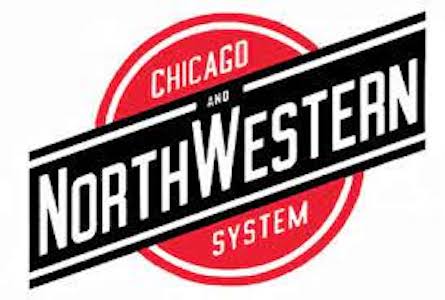
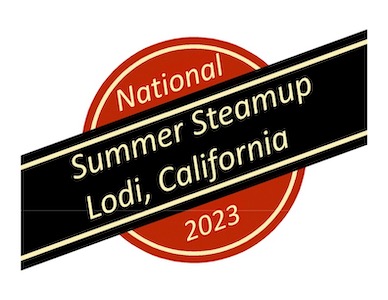
The Chicago and North Western (C&NW), also known as the “North Western” was chartered on June 7, 1859, but has some of its roots going back to 1836. The C&NW stretched through Wisconsin, Minnesota, Illinois, Iowa and South Dakota. The railroad operated more than 5,000 miles (8,000 km) of track at the turn of the 20th century, and over 12,000 miles (19,000 km) of track in seven states at its height in the 1970’s. The C&NW became one of the longest railroads in the United States as a result of mergers with other railroads, such as the Chicago Great Western Railway, Minneapolis and St. Louis Railway and others. The C&NW was the only American railroad to adopt left hand side when running on double track mainlines. By 1995, track sales and abandonment had reduced the total mileage to about 5,000. The majority of the abandoned and sold lines were lightly trafficked branches. Large line sales, such as those that resulted in the Dakota, Minnesota and Eastern Railroad, further helped reduce the railroad to a mainline core with several regional feeders and branches. Union Pacific (UP) purchased the company in April 1995 and integrated it with its own operation.
NSS 2022:
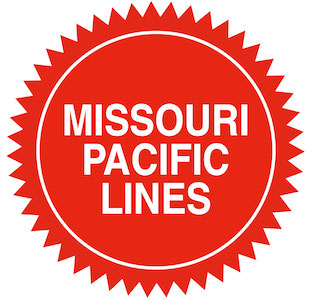
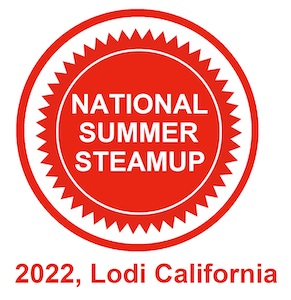
The Missouri Pacific Railroad, commonly known as “MoPac” was one of the first railroads in the United States west of the Mississippi River. The MoPac grew from dozens of predecessors and mergers. On July 4, 1851, ground was broken at St. Louis on the Pacific Railroad, the predecessor of the Missouri Pacific Railroad. The first section of track was completed in 1852; in 1865, it was the first railroad in Kansas City. In 1872, the Pacific Railroad was reorganized as the Missouri Pacific Railway by new investors after a railroad debt crisis. Because of corporate ties extending back to the Pacific Railroad, Missouri Pacific at one time advertised itself as being “The First Railroad West of the Mississippi”.
By the 1980s the system owned 11,469 miles of rail line over 11 states bounded by Chicago, Pueblo Colorado, Omaha, Laredo Texas, and southeast along the Gulf seaports of Louisiana and Texas. The MoPac company became a pioneer in the early days of computer-guided rail technology. It was a major hauler of coal, grain, ore, autos, dry goods and shipping containers. At the time of its mega-merger in 1982, the MoPac owned more and newer locomotives and operated more track than partner Union Pacific Railroad.
In December, 1982 the Missouri Pacific was purchased by Union Pacific with the official merger completed on January 1, 1997.
NSS 2021:

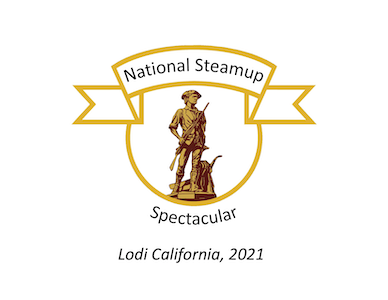
The Andover and Wilmington Railroad was incorporated March 15, 1833, to build a branch from the Boston and Lowell Railroad at Wilmington, Massachusetts, north to Andover, Massachusetts. The line opened to Andover on August 8, 1836. The name was changed to the Andover and Haverhill Railroad on April 18, 1837, reflecting plans to build further to Haverhill, Massachusetts (opened later that year), and yet further to Portland, Maine, with the renaming to the Boston and Portland Railroad on April 3, 1839, opening to the New Hampshire state line in 1840.
The Boston and Maine Railroad was chartered in New Hampshire on June 27, 1835, and the Maine, New Hampshire and Massachusetts Railroad was incorporated March 12, 1839, in Maine, both companies continuing the proposed line to South Berwick, Maine. The railroad opened in 1840 to Exeter, New Hampshire, and on January 1, 1842, the two companies merged with the Boston and Portland to form a new Boston and Maine Railroad.
Boston & Maine depot, Boston, Massachusetts (19th c.)
On February 23, 1843, the B&M opened to Agamenticus, on the line of the Portland, Saco and Portsmouth Railroad in South Berwick. On January 28 of that year, the B&M and Eastern Railroad came to an agreement to both lease the PS&P as a joint line to Portland.
The Boston and Maine Railroad Extension was incorporated March 16, 1844, due to a dispute with the Boston and Lowell Railroad over trackage rights rates between Wilmington and Boston. That company was merged into the main B&M on March 19, 1845, and opened July 1, leading to the abandonment of the old connection to the B&L (later reused by the B&L for their Wildcat Branch). In 1848 another original section was abandoned, as a new alignment was built from Wilmington north to North Andover, Massachusetts, in order to better serve Lawrence, Massachusetts.
A new alignment to Portland opened in 1873, splitting from the old route at South Berwick, Maine. The old route was later abandoned. This completed the B&M “main line” which would become known as the Western Route to distinguish it from the Eastern Route (described below) which also connected Boston and Portland.
NSS 2020:
The year that didn’t happen… At least that’s what COVID wants us all to believe.
NSS 2019:
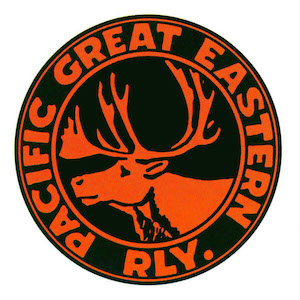
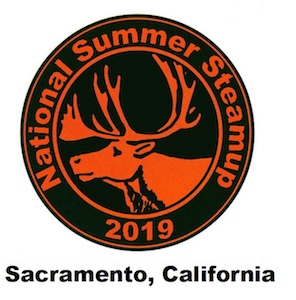
The Pacific Great Eastern Railway (PGE), operated in the province of British Columbia Canada. At its height the PGE was the third-largest railway in Canada, eventually operating 1,441 miles of mainline track. It was owned by the provincial government starting in 1918, became British Columbia Railway (BCR) in 1972, and BC Rail (BCR) in 1984. In 2004 the operations were sold to the Canadian National Railway. Chartered in 1912, the railway was acquired by the provincial government in 1918 after running into financial difficulties. PGE was the railway that ran “from nowhere, to nowhere” for over 30 years, neither passing through any major city nor interchanging with any other railway, its southern terminus was at Squamish and its northern terminus at Clinton, 166 miles from Squamish. By 1921 the northern terminus was Quesnel, 347 miles north, and then 12 miles further. Major expansions were made between 1949 and 1984 to bring the PGE (BCR) mileage to 1,441. Primarily a freight railway, it also offered passenger service, as well as some excursion services, most notably the Royal Hudson.
NSS 2018:
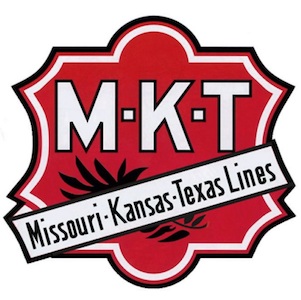
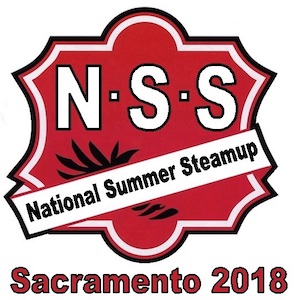
NSS 2017:
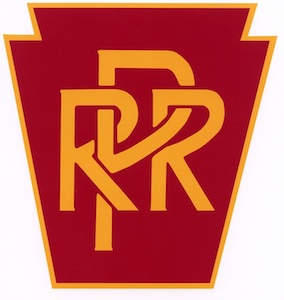
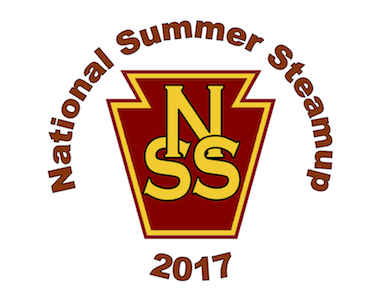
NSS 2016:
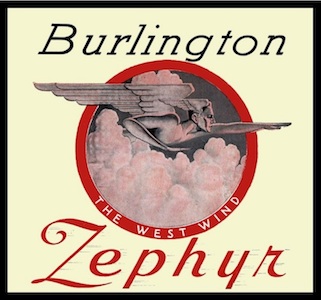
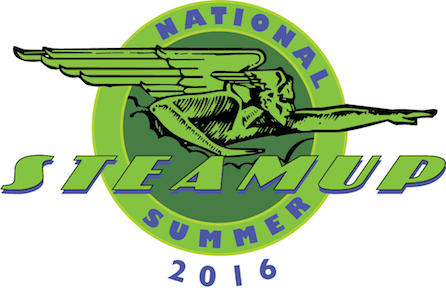
NSS 2015:
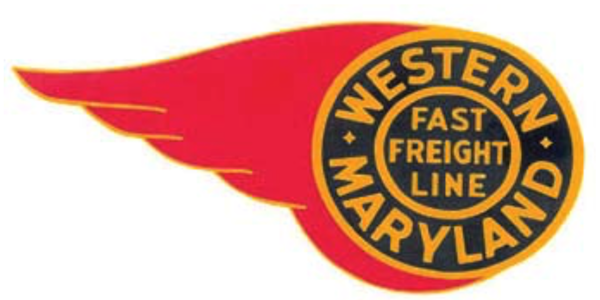
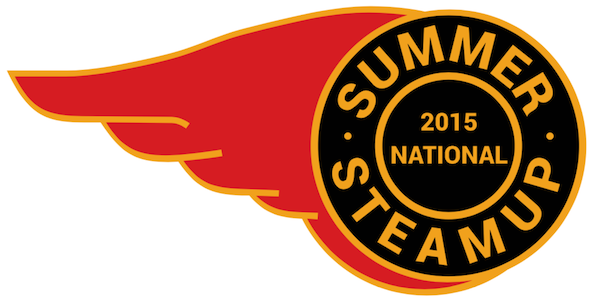
The 2015 logo is an homage to a mostly freight railroad that operated from Baltimore to central West Virginia and southern Pennsylvania. The Western Maryland Railroad, founded in 1852, with its main terminal in Baltimore.
The city of Baltimore, in fact, played a large role in the formation and operation of the railroad, selling off its interests in 1902 to George Gould (who in turn went bankrupt and whose interests in the railroad were taken over by John D. Rockerfeller in the 1920s).
The Western Maryland carried coal from West Virginia to the port of Baltimore and returned west with consumer goods.
Minority interests in Western Maryland were purchased by the Chesapeake and Ohio and later by the Baltimore & Ohio and the three railroads eventually merged as the Chessie System, which in turn became today’s CSX Transportation.
NSS 2014:
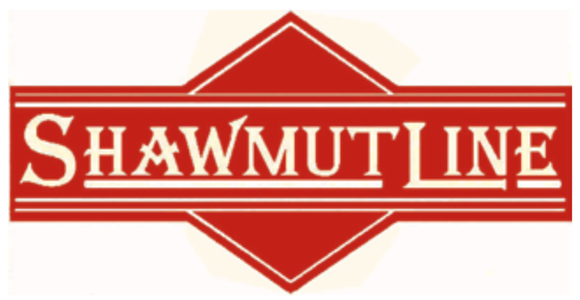
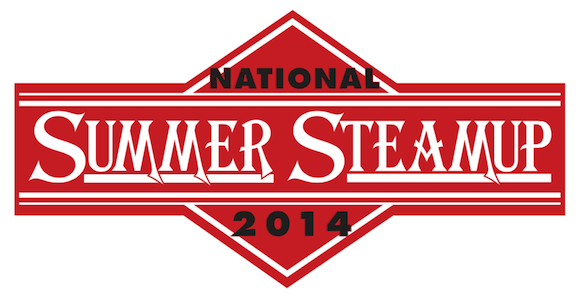
In 2014, the honored railroad operated in Northern Pennsylvania and Southern New York from the turn of the 20th Century until just after the second World War. The Pittsburg, Shawmut & Northern Railroad was known as the Shawmut Line and while the red logo is in fact used by an unrelated company, the green one was the same colors as 2013’s Southern Railway spoof, so we picked the red.
Southern Railway, which operated the elegant passenger train through the south, the “Crescent,” from New York City to New Orleans, running daily. GREAT NORTHERN RAILWAY
NSS 2013:
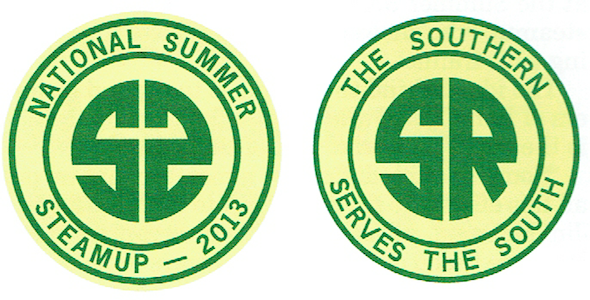
NSS 2012:

Twenty-twelve’s logo was a take-off on a version of the logo of the Southern Pacific, the railroad whose iconic shops were headquartered here in Sacramento. It was something of a recycling of the first logo to kick off this tradition, which was used in 2001 to introduce a new club, the Pacific Coast Live Steamers (which owns three of the layouts used at the Summer Steamup). Southern Pacific used at least six different color schemes (not counting black and white) with its logo over the years. The 2001 version used purple for the drumhead, white for the lettering and gold for the setting sun, while the 2012 version used orange for the drumhead and gold for the lettering and setting sun.
NSS 2011:
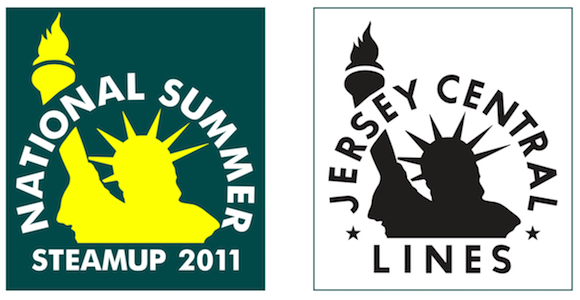
In 2011, the late, great Central Railroad Co. of New Jersey was featured; it was also known as the Jersey Central Lines. The logo used a silhouette of the Statue of Liberty because the New York City terminus of the line was only yards away from the statute itself and today that abandoned rail terminal — along with the statue and Ellis Island — is part of the Liberty State Park in New Jersey. Another reason the company used the statue as a logo: its headquarters were on Liberty Street in Manhattan. The Jersey Central Lines freight operations were merged into Conrail in 1976, while the passenger lines became part of New Jersey Transit that same year.
NSS 2010:
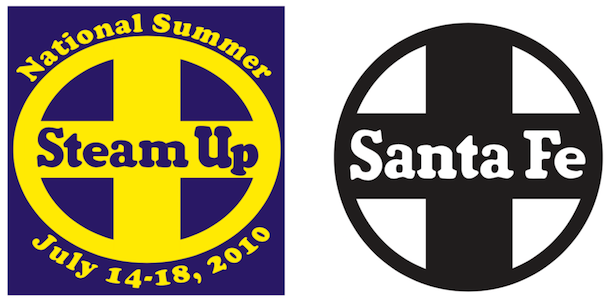
In 2010, we honored the Atchison, Topeka and Santa Fe Railway, which provided service throughout the Southwest and in the early 20th century came to Northern California with a railhead at Richmond, Calif., connecting to San Francisco by ferry. ATSF merged with Burlington Northern in 1995 making today’s BNSF.
NSS 2009:
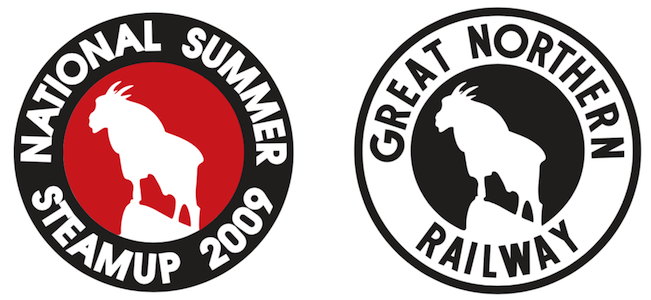
For 2009, the Great Northern Railway and its famous “Rocky” logo served as our inspiration. Great Northern, which served Montana’s Glacier National Park, took the mountain goat as its logo in 1921 in order to identify with the park.
NSS 2008:
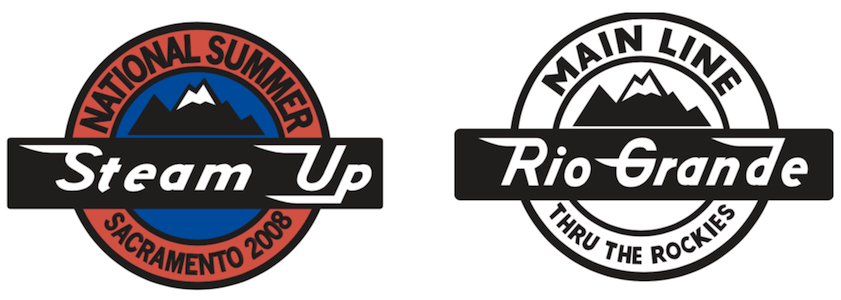
The penultimate logo of the Denver & Rio Grande Railroad gave us the idea for the 2008 Summer Steamup logo. It was used by the iconic narrow-gauge Colorado railroad from 1948-1967. It probably would have been impossible to do this logo without the “Rio Grande” typeface drawn by Benn Coifman at Railfonts.com.
NSS 2007:
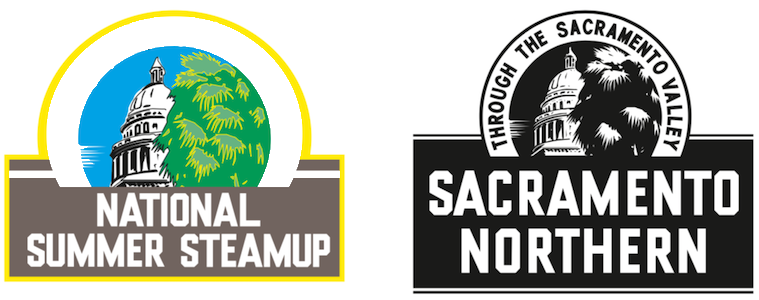
The 2007 logo (also used in 2003) was a take on the Sacramento Northern, which provided interurban service between Oakland and Sacramento, with trains carried across the Carquinez Straits (the bit of water that links San Francisco Bay with the Sacramento River) on ferries. Today, the Sacramento Northern is best remembered at the Western Railway Museum in Solano County’s Rio Vista, which marked the approximate halfway point on the line. The museum supports about six miles of electrified track and is open every weekend.
NSS 2006:

The inspiration for the 2006 logo was the medallion of the Southern Pacific Daylight. This train ran in a couple of iterations, including the Coast Daylight, the Lark and the San Joaquin Daylight. The first two trains ran from Los Angeles to Seattle, up SP’s trackage that skirts the Pacific Ocean (the Daylight started at one end or the other during the day; the Lark started at night).
NSS 2005:
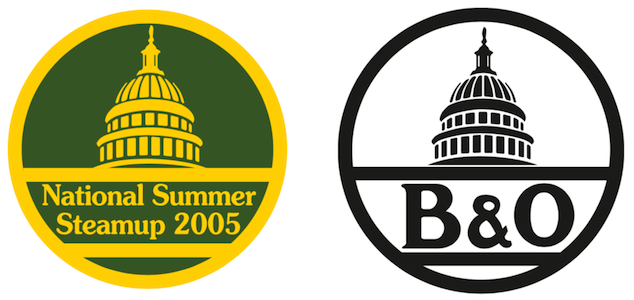
Inspired once again by a capitol dome, in 2005 we based the Summer Steamup logo on the identity of the Baltimore & Ohio railroad. The B&O — the first railroad organized in the United States, in 1827 — had the first locomotive built in America (“Tom Thumb”) and was the first railroad to reach the Ohio River from the seacoast.
NSS 2004:
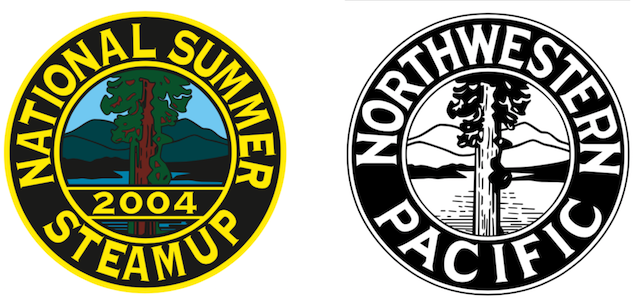
The 2004 logo is a spin on the Northwestern Pacific, which operated throughout Marin, Sonoma, Mendocino and Humboldt counties.
The “Redwood Empire Route” was founded in 1907 when six railroads owned by Santa Fe and Southern Pacific were merged. The railroad had a veritable plethora of mainlines and shortlines, broad gauge and narrow gauge, as well as electric interurbans, ferry steamboats and car floats.
Steam Events LLC Logo:
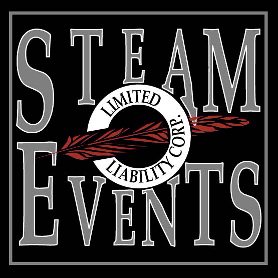
In 2004 we adapted the 2002 logo for use by Steam Events LLC, and you can see that logo on the shirts worn by the event organizers.
NSS 2003:
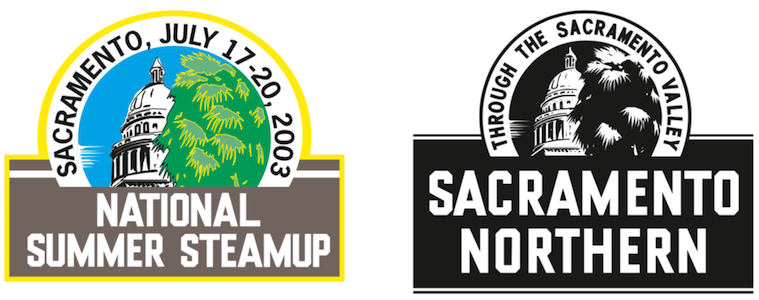
NSS 2002:
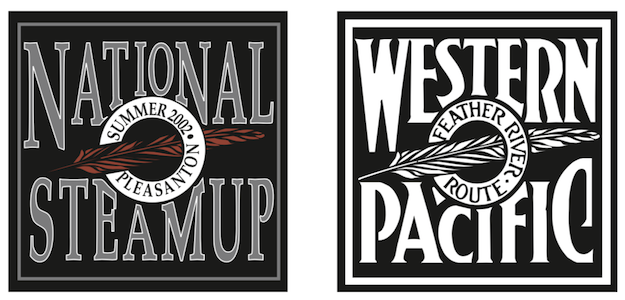
Our 2002 logo was based on the “Feather River Route” logo of the Western Pacific. The railroad was founded in San Francisco in 1903 and had eventually had rails from Oakland, through the Central Valley, into the Feather River Canyon, over the Sierras and across Nevada to Salt Lake City (the last spike was driven home on Nov. 10, 1931). The WP handled the western leg of the famed “California Zephyr” train. The feather in the logo is to honor the Feather River Canyon leg of the company’s route.
The Trademark and Copyright of the original logos are held by their respective companies. The steamup logos are copyright their respective years by Steam Events LLC.
